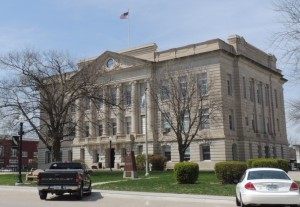Could be used for more than rural needs
 The Greene County supervisors agreed easily on what they’d like to be able to use revenues from a 1-cent local option sales and service tax (LOSST), but they had lively discussion about how to word it on the Nov. 4 ballot.
The Greene County supervisors agreed easily on what they’d like to be able to use revenues from a 1-cent local option sales and service tax (LOSST), but they had lively discussion about how to word it on the Nov. 4 ballot.
The board at its Aug. 4 meeting approved ballot language stating that revenue would be used for “rural property tax relief and any other lawful purpose of the county.” (See the link to the meeting minutes under the Calendar/Agenda tab of GreeneCountyNewsOnline.)
The statement is a compromise. Supervisor Guy Richardson suggested striking the word “rural” from the current statement, which calls for the revenues to be used solely for rural property tax relief and rural betterment.
Supervisors Mick Burkett, John Muir and Tom Contner all wanted “rural” left in. “The farmers go to the polls,” Contner said. There was fear that without assuring funds would be used for rural purposes, it would not be approved by voters.
In discussion, the supervisors said they would consider using LOSST funds for repair and maintenance of the courthouse if it were allowed. No other use except for rural property tax relief (on the rural supplemental levy paid only by rural property owners, not those in incorporated towns) and rural betterment were discussed. The supervisors have allocated LOSST revenues to the secondary roads department in the past. That will continue.
The county and all incorporated towns in the county have a LOSST in place now. All voters except those in the city of Churdan will be asked at the Nov. 4 general election to renew the LOSST, with a sunset date of June 30, 2027. That sunset date matches the date of the LOSST already approved by Churdan voters. Approval of the LOSST will not increase taxes from their current level.
Towns except Jefferson and Dana have already submitted their ballot language to the auditor’s office. None are changing their intended use. In Rippey, Grand Junction and Paton, LOSST revenues will be used solely for property tax relief. In Scranton, 20 percent will go to the Scranton public library, 30 percent for general expenses of the city, 30 percent for public works and 20 percent for water/sewer.
In Churdan, LOSST funds are not used for property tax relief, but are specified for public safety, parks and recreation, “or any other lawful purpose of the city.”
